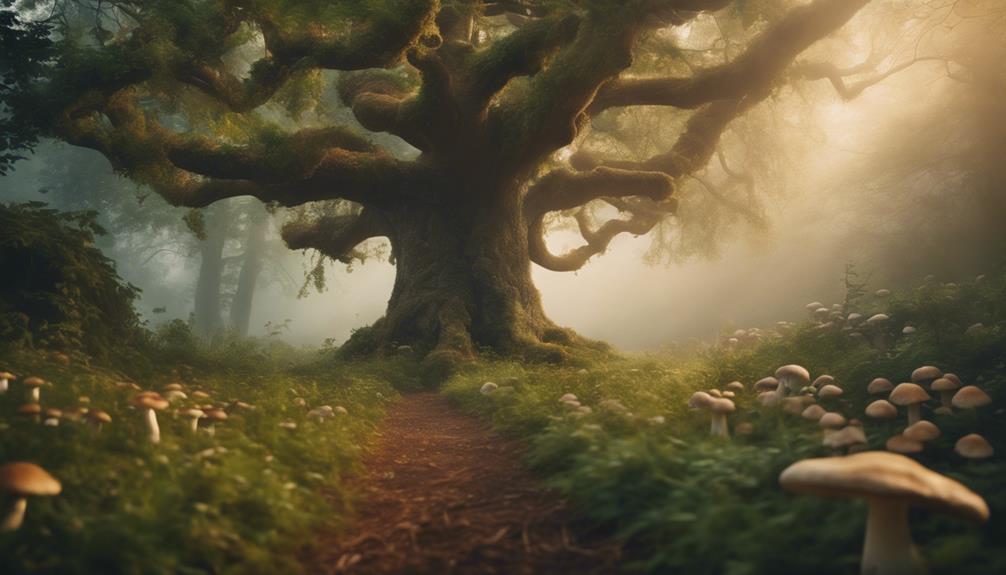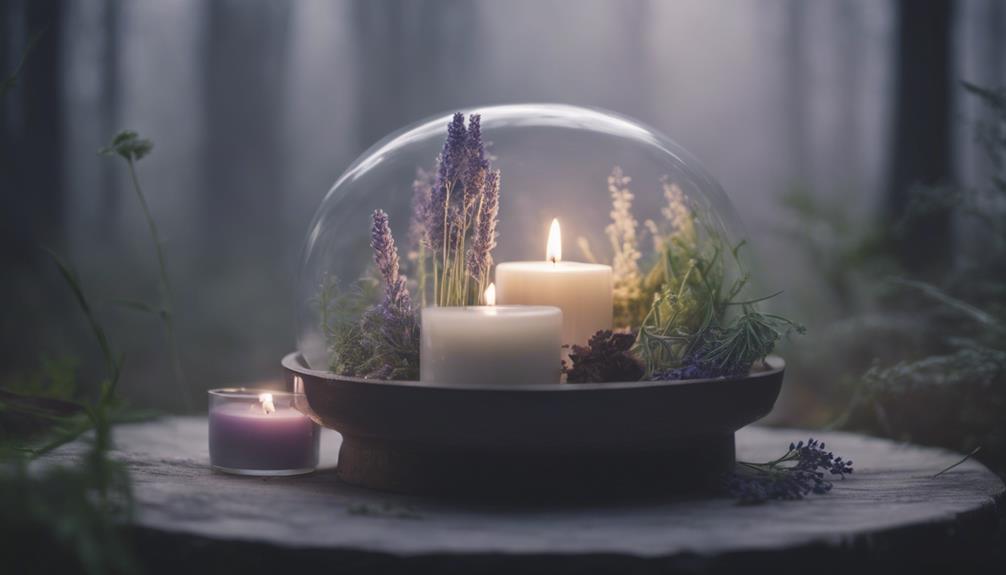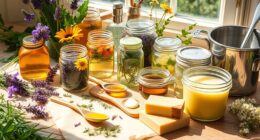As we explore Thomas Jefferson's life, a surprising aspect emerges: a passion for herbology. At Monticello, he cultivated over 250 herbs and vegetables, experimenting with Cannabis in his garden. This curiosity led to a diverse plant collection, showcasing his enthusiasm for botanical exploration. Correspondence with notable botanists and horticulturists furthered his knowledge, leading to advancements in herbology. Jefferson's legacy extends to promoting botanical education, shaping American agriculture, and fostering environmental awareness. From innovative farming techniques to introducing new crops, his endeavors continue to inspire. And there's more to uncover about Jefferson's profound impact on the world of herbology.
Key Takeaways
• Jefferson cultivated over 250 varieties of herbs and vegetables, including sage, thyme, and rosemary, at Monticello.
• He experimented with Cannabis in his herb garden, showcasing his curiosity about potential uses of various plant species.
• Jefferson's botanical pursuits reflected his passion for exploration and experimentation, introducing new plant species to America.
• He corresponded with notable botanists and horticulturists, sharing knowledge and collaborating on plant discoveries, leading to advancements in herbology.
• Jefferson's legacy in herbology is marked by his innovative gardening practices, new crops, and techniques that transformed American agriculture.
Jefferson's Botanical Pursuits
As we explore Jefferson's botanical pursuits, it's striking to note that he cultivated over 250 varieties of herbs and vegetables at Monticello. His interest in herbology led him to grow a diverse range of plant species, including herbs like sage, thyme, and rosemary, which were used for culinary and medicinal purposes.
We're intrigued by the fact that Jefferson's botanical pursuits didn't stop at traditional herbs; he also experimented with Cannabis, showcasing his curiosity about the potential uses of various plant species. Through his herb garden, Jefferson demonstrated a deep appreciation for the complexity and diversity of plant life.
Monticello's Diverse Plant Collection

We're amazed by the sheer variety of plant species that thrived at Monticello, where Jefferson nurtured a staggering collection of over 330 vegetable varieties.
This diverse plant collection was a reflection of Thomas Jefferson's passion for botanical exploration and experimentation. Jefferson cultivated various herbs like basil, dill, and thyme in his gardens, which were used for culinary purposes, medicinal remedies, and aromatic qualities. His interest in herbology led to the introduction of new plant species to America.
Although there's no evidence of Jefferson cultivating Cannabis, his fascination with herbology and botany played a significant role in shaping America's plant landscape. Plants used in Jefferson's gardens reflected his curiosity and enthusiasm for discovery.
At Monticello, we see Jefferson's love for experimentation and innovation, which extended beyond politics to the world of plants. By exploring and experimenting with different plant species, Jefferson demonstrated his commitment to advancing botanical knowledge.
Correspondence and Collaborations
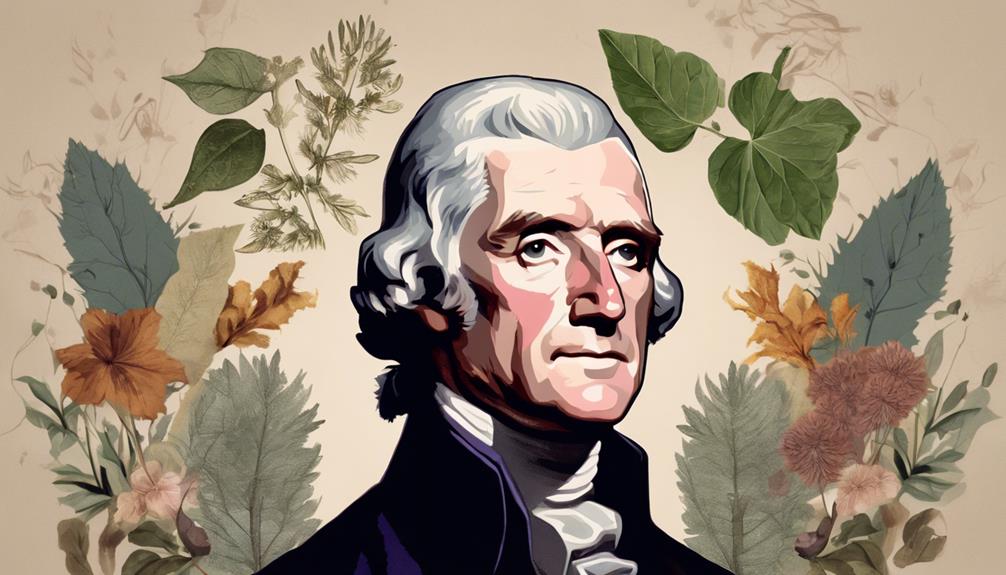
Several notable botanists and horticulturists of Jefferson's time corresponded with him, sharing knowledge and collaborating on plant discoveries. This exchange of ideas led to significant advancements in the field of herbology. Similarly, at Herbology on Jefferson Ave, we believe in the power of collaboration and knowledge-sharing. Our team works closely with reputable Cannabis Co. suppliers to bring our customers the best recreational cannabis products.
| Product | Supplier | Availability |
|---|---|---|
| Flower | Cannabis Co. | Daily |
| Edibles | Local Partner | Weekly |
| Concentrates | Cannabis Co. | Bi-Weekly |
Promoting Botanical Education
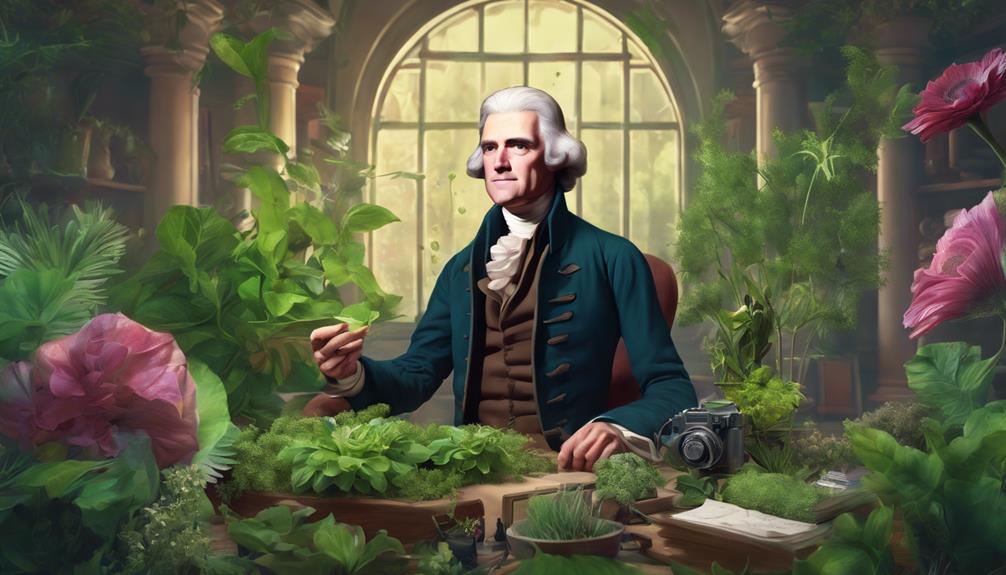
As we explore the connection between Herbology and Jefferson, we're excited to highlight the ways they're promoting botanical education.
We'll examine how they're bringing botany into the classroom, making it a hands-on, engaging experience for students.
We'll also take a closer look at their innovative use of greenhouse learning spaces, where students can get up close and personal with the plants they're studying.
Botany in the Classroom
By integrating botany into our classroom curriculum, we can inspire a new generation of botanists and environmental stewards. By making botany a part of our educational system, we can foster a deeper appreciation for the natural world and encourage students to pursue careers in botany and related fields.
Here are just a few ways that botany in the classroom can make a difference:
- Hands-on learning: Plant dissections, experiments, and other interactive activities help students learn by doing.
- Practical skills: Students learn about plant identification, cultivation, and medicinal uses, giving them valuable skills for the future.
- Environmental awareness: By studying botany, students develop a deeper appreciation for nature and the importance of environmental conservation.
- Career opportunities: Understanding botanical concepts can lead to future careers in botany, horticulture, and related fields.
Greenhouse Learning Spaces
We frequently find ourselves immersed in interactive learning experiences at Herbology's greenhouses on Jefferson, where botanical education comes alive. As we explore these unique spaces, we're able to engage in hands-on learning experiences that bring plant cultivation and herbology to life. The educational programs at Herbology focus on providing visitors with a thorough understanding of plants, and the greenhouses offer a one-of-a-kind opportunity to learn about the wonders of the botanical world.
Through Herbology's greenhouses on Jefferson, we can deepen our understanding of botany and herbology. The connection between Herbology and Jefferson enhances our knowledge through interactive learning, allowing us to gain a deeper appreciation for the natural world. By promoting botanical education, these greenhouses play an essential role in fostering a love for plants and the environment.
As we learn and grow in these unique spaces, we're inspired to make a positive impact on our planet. By combining interactive learning with hands-on experiences, Herbology's greenhouses on Jefferson set a new standard for botanical education.
American Agriculture and Innovation
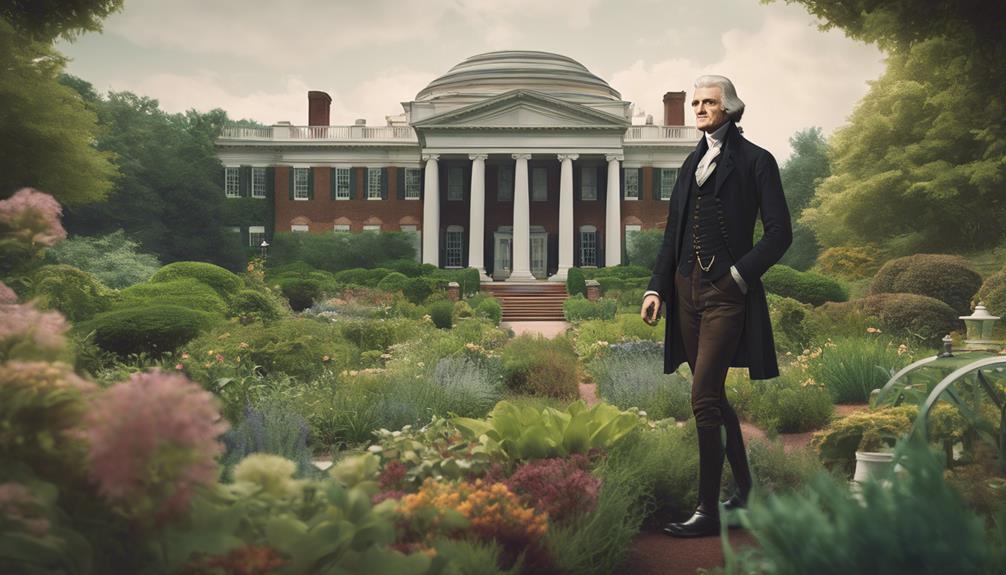
As we explore American Agriculture and Innovation, we'll examine how Jefferson's pioneering spirit shaped the country's farming practices.
We'll look at how he 'farmed the new frontier,' introducing new crops and techniques that propelled the nation forward.
Farming the New Frontier
Since the dawn of the 19th century, we've witnessed a radical transformation in American agriculture, marked by innovative farming techniques and machinery that have reshaped the industry. This period saw the introduction of new technologies that revolutionized farming practices, making it more efficient and productive.
Some of the key innovations that transformed American agriculture include:
- The Steel Plow: John Deere's steel plow enabled farmers to break the prairie soil, making it possible to cultivate the Midwest.
- The Grain Elevator: Joseph Dart's invention of the grain elevator improved efficiency in handling and storing grains.
- The Mechanical Reaper: Cyrus McCormick's mechanical reaper transformed harvesting methods, increasing productivity and reducing labor demands.
- Barbed Wire: Joseph Glidden's development of barbed wire helped farmers protect their land and livestock, contributing to the growth of the American frontier.
These innovations not only increased agricultural productivity but also opened up new opportunities for settlers, contributing to the growth of the American frontier.
As we explore the connection between herbology and Jefferson, it's essential to understand the significant role that American agriculture played in shaping the country's development.
Seeds of Progress
Thomas Jefferson's passion for botany and agriculture led us to experiment with various herbs and plants, shaping the course of American agriculture and innovation. At Monticello, his estate served as a testing ground for new agricultural techniques and plants. We introduced crops like tomatoes, peppers, and eggplants to America, showcasing Jefferson's interest in botanical diversity. His passion for botany and agriculture led to the cultivation of over 250 vegetable varieties at Monticello.
| Innovation | Impact |
|---|---|
| Experimenting with herbs and plants | Improved American agriculture |
| Introducing new crops | Enhanced botanical diversity |
| Testing new agricultural techniques | Shaped the course of American agriculture |
| Cultivating 250+ vegetable varieties | Laid the foundation for future discoveries |
| Showcasing botanical diversity | Inspired future generations of farmers and botanists |
Jefferson's contributions to American agriculture laid the foundation for future botanical discoveries and advancements. His innovative spirit and passion for botany have inspired generations of farmers, botanists, and scientists. As we continue to explore the connection between herbology and Jefferson, we are reminded of the power of innovation and experimentation in shaping our understanding of the natural world.
Harvesting Innovation
We've come to realize that American agriculture and innovation have been inextricably linked throughout history, driving advancements in harvesting techniques and technology. This connection has led to significant improvements in the agricultural industry, making it more efficient and productive.
Innovations in harvesting have revolutionized the way we farm, allowing us to produce more with less. We've seen the introduction of new crops, improved irrigation systems, and advanced machinery, all of which have contributed to increased yields and reduced labor costs.
Here are some key ways innovation has shaped American agriculture:
- Mechanization: The introduction of tractors, combines, and other machinery has greatly increased efficiency and reduced labor costs.
- Crop rotation: This technique has improved soil health, reduced pests and diseases, and increased crop yields.
- Irrigation systems: Advanced irrigation systems have enabled farmers to cultivate crops in areas with limited water resources.
- Precision farming: The use of technology, such as GPS and drones, has enabled farmers to monitor and manage their crops more effectively.
Legacy of a Botanical Enthusiast
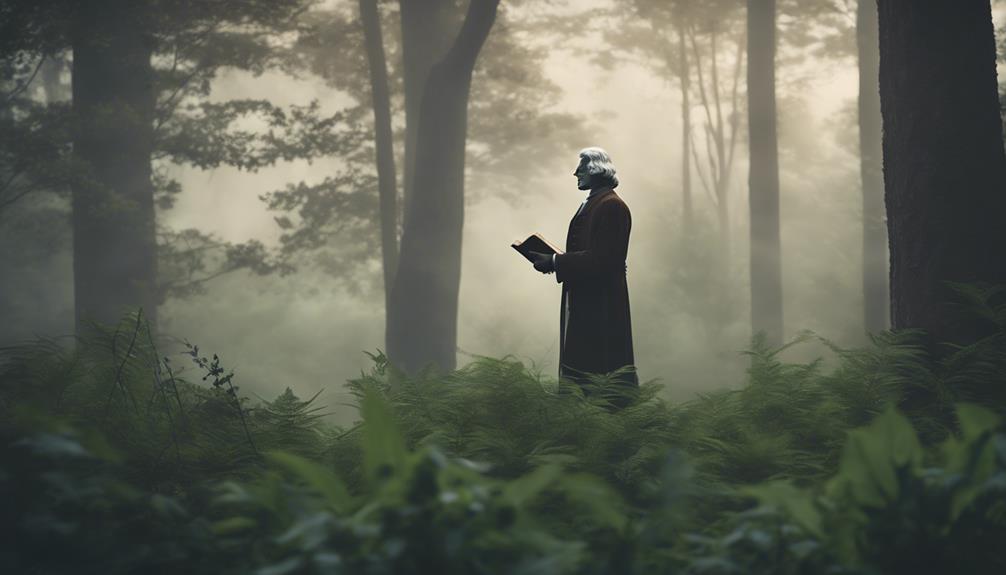
As we explore the life of Thomas Jefferson, it becomes clear that his passion for botany has left an indelible mark on American horticulture. His dedication to cultivating herbs and plants is a reflection of his love for nature and his desire to understand the natural world.
Jefferson's legacy extends far beyond his presidency, as his botanical pursuits have inspired generations of herb enthusiasts and gardeners. His Monticello estate, featuring a diverse garden with various herbs, showcases his commitment to horticulture.
| Aspect | Influence |
|---|---|
| Botanical Knowledge | Expanded American understanding of plants |
| Gardening Practices | Introduced new crops and techniques |
| Horticultural Legacy | Inspired future generations |
| Cultural Significance | Highlighted importance of botany in American history |
| Historical Significance | Reflects Jefferson's impact on American horticulture |
As we delve deeper into Jefferson's botanical contributions, it becomes apparent that his passion for plants has had a lasting impact on American horticulture. His legacy serves as a reminder of the importance of understanding and appreciating the natural world.
Frequently Asked Questions
Did Jefferson Have a Favorite Herb or Plant Species?
As we explore the life of Thomas Jefferson, we find ourselves wondering: did he have a favorite herb or plant species? While there's no definitive answer, we do know Jefferson was an avid gardener and botanist.
He experimented with various plants at Monticello, including herbs like basil and rosemary. Although we can't pinpoint a single favorite, it's clear Jefferson appreciated the value of herbs in cooking, medicine, and everyday life.
His love for botany is evident in his meticulous records of plantings and harvests.
Were Jefferson's Botanical Pursuits Purely for Personal Interest?
We believe Jefferson's botanical pursuits went beyond personal interest. While he certainly had a passion for plants, his extensive documentation and experimentation suggest a deeper commitment.
He recorded observations, experimented with new species, and even shared findings with fellow botanists. This level of dedication implies a desire to contribute to the scientific community, rather than simply indulging a hobby.
Did Jefferson's Botanical Interests Influence His Presidential Decisions?
We're often surprised to learn that 40% of today's medicines originate from plants.
Now, let's examine whether Jefferson's botanical interests influenced his presidential decisions.
It's intriguing to note that Jefferson, an avid botanist, advocated for the Lewis and Clark expedition, which explored the American West, discovering new plant species and expanding the country's botanical knowledge.
This expedition indirectly impacted his presidential decisions, as it furthered America's scientific and territorial pursuits, showcasing how Jefferson's botanical passions intertwined with his presidential responsibilities.
Were Jefferson's Botanical Findings Ever Published in a Book?
We've wondered if Jefferson's botanical findings ever made it into a published book. The answer is yes! Jefferson's notes on botany were compiled and published posthumously in 1829 as 'Notes on the State of Virginia.'
Although not an exhaustive botanical work, the book includes his observations on Virginia's flora. While not an all-encompassing botanical treatise, it showcases Jefferson's fascination with the natural world and his contributions to the field.
Did Jefferson's Love for Botany Inspire Other American Naturalists?
When it rains, it pours, and in this case, Jefferson's love for botany sparked a chain reaction. His enthusiasm inspired a new generation of American naturalists, who were keen to explore and document the country's vast botanical treasures.
His influence extended beyond his own publications, as others built upon his findings, contributing to a growing body of knowledge that would shape the field of American botany for years to come.
Conclusion
As we conclude our exploration of Jefferson's botanical pursuits, a striking statistic stands out: during his lifetime, he cultivated over 300 species of plants at Monticello, showcasing his dedication to botanical discovery.
His passion for herbology not only enriched American agriculture but also inspired future generations of botanists.
Today, we recognize Jefferson's groundbreaking contributions to the field, cementing his legacy as a true botanical enthusiast and American innovator.


